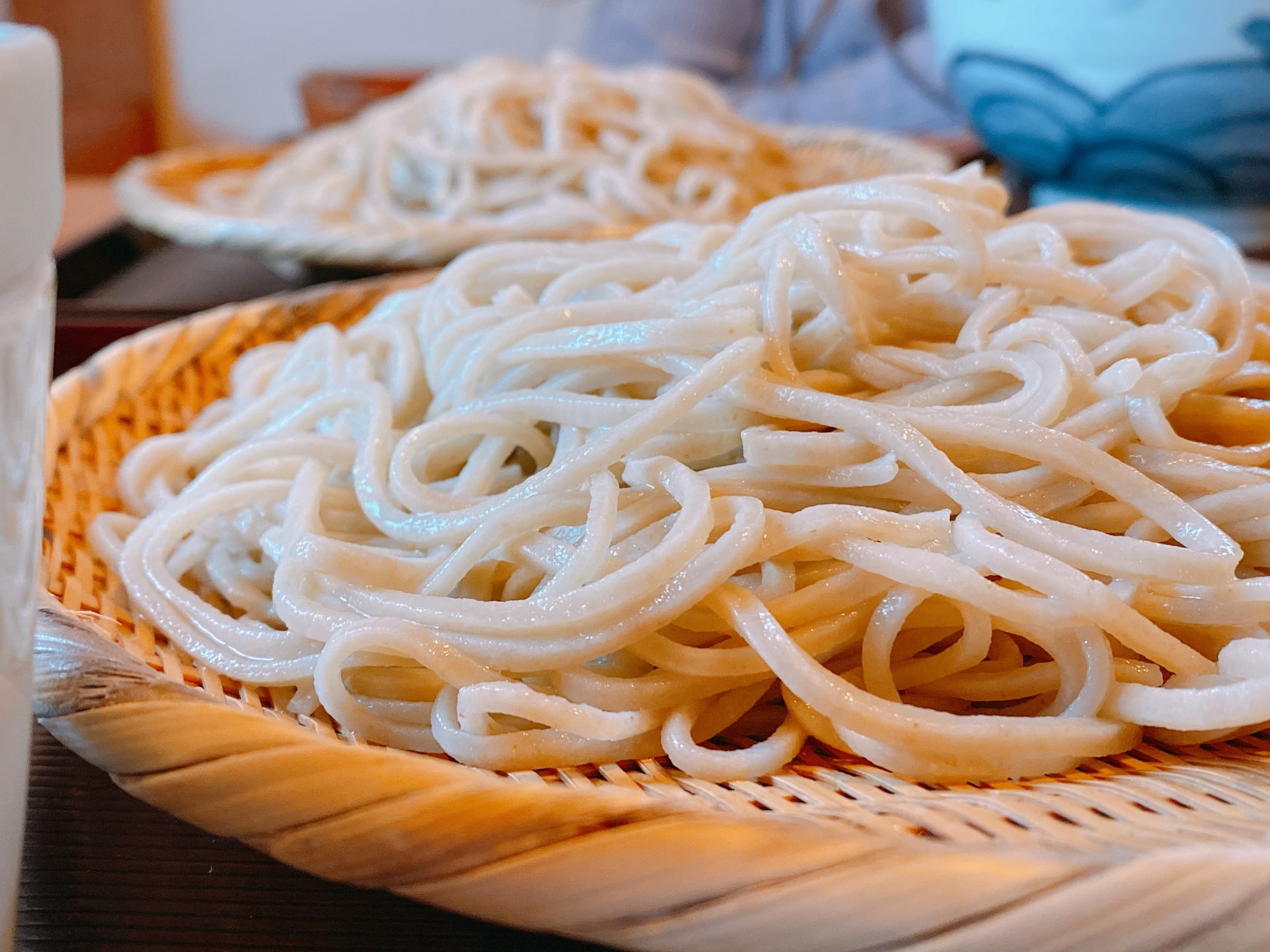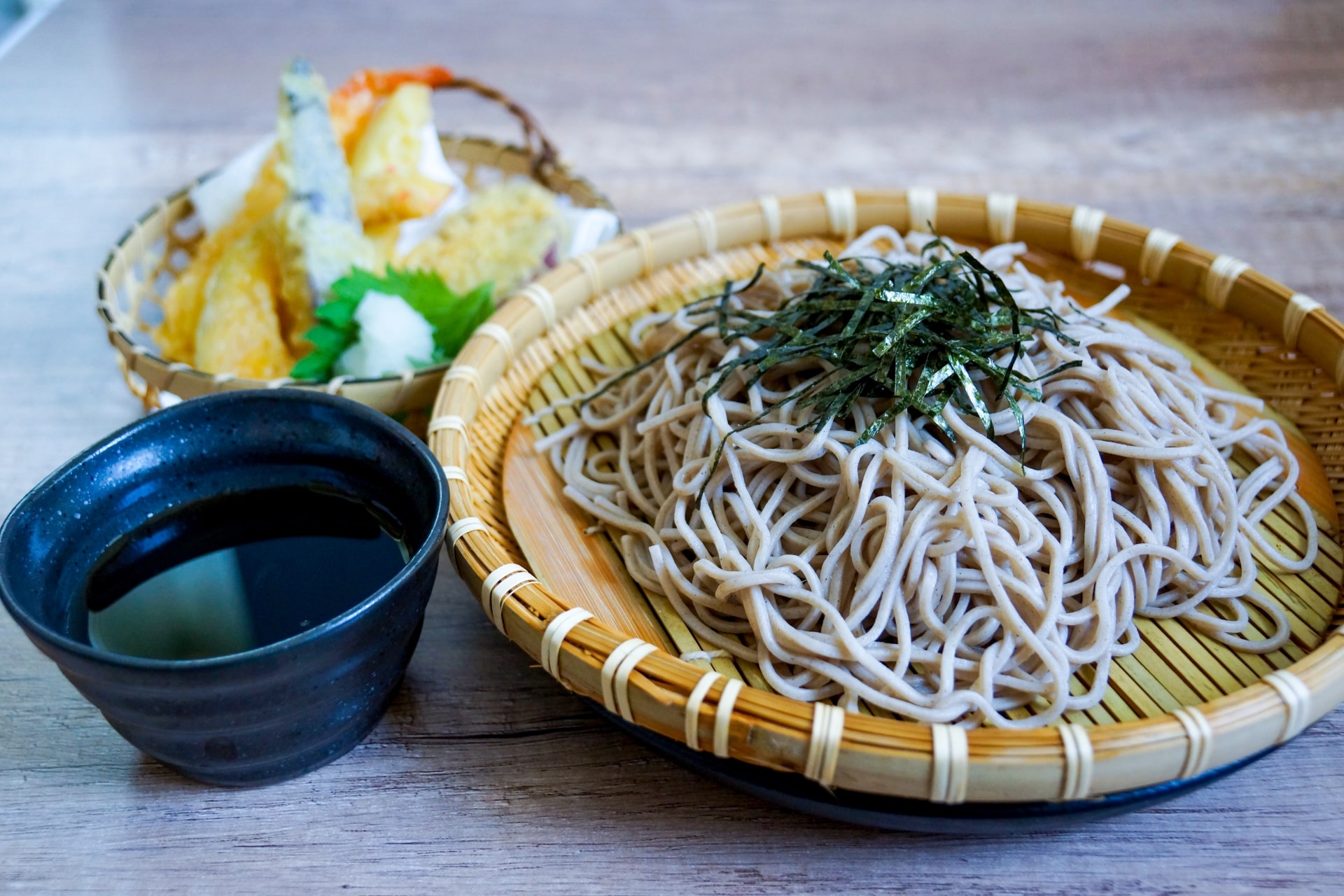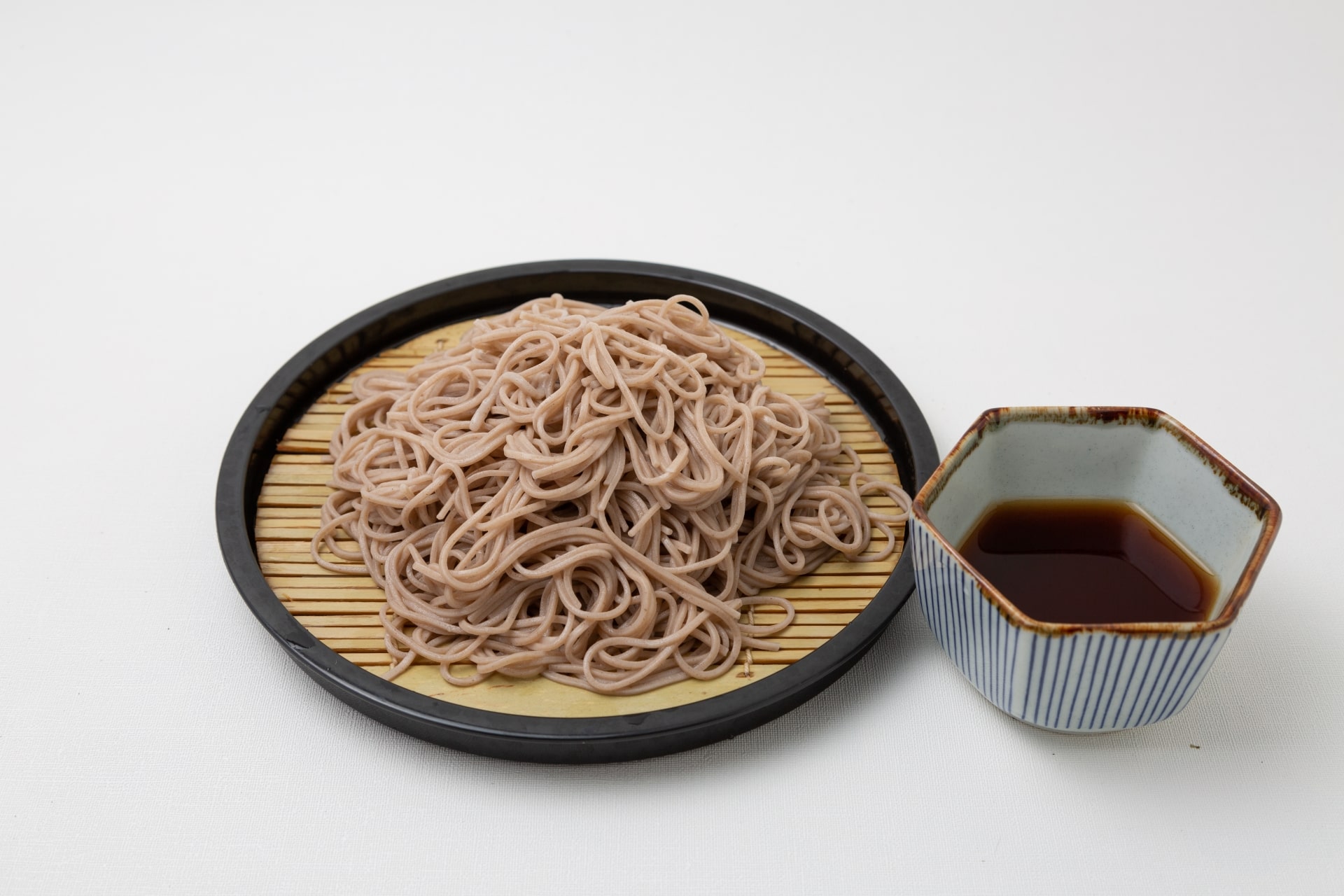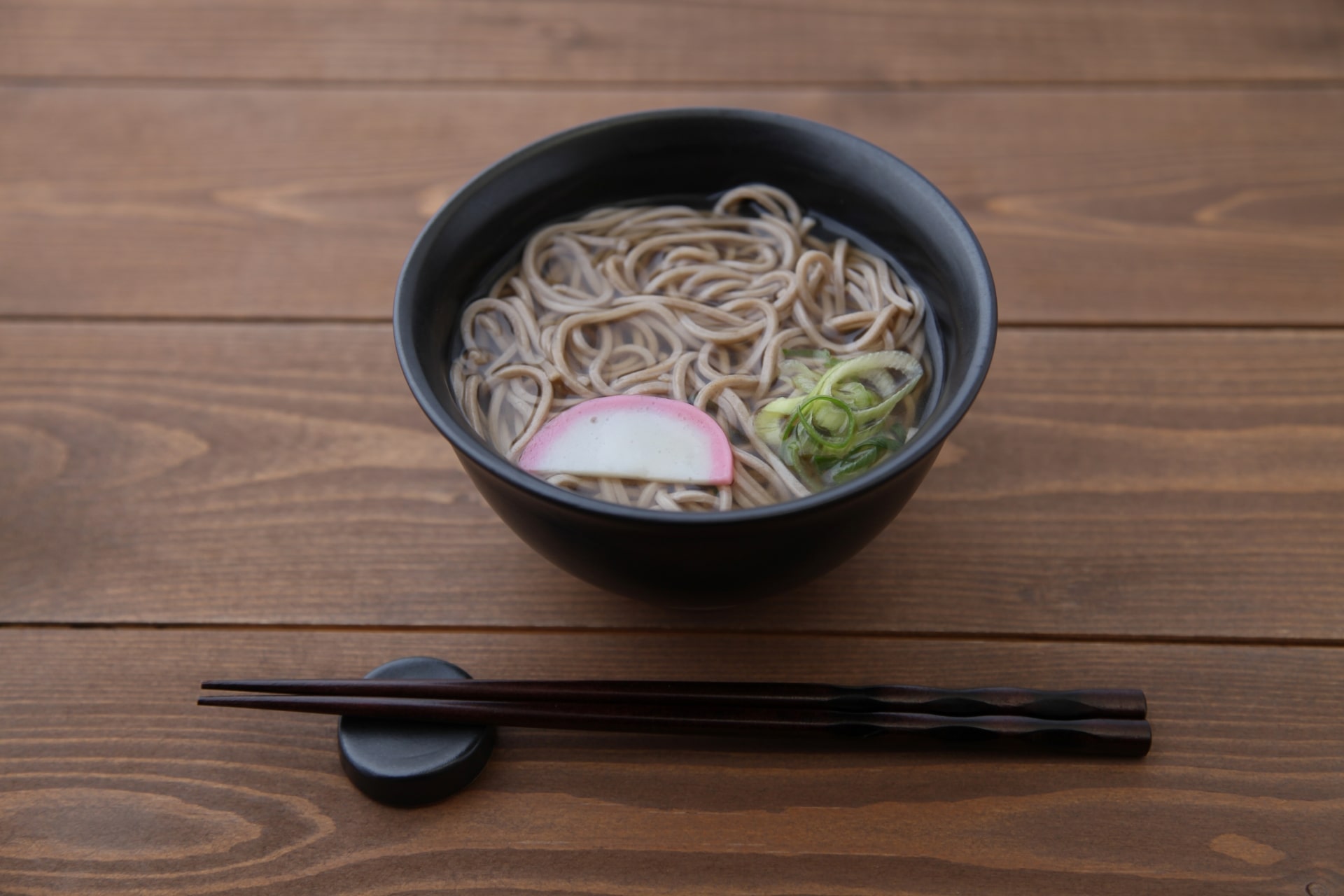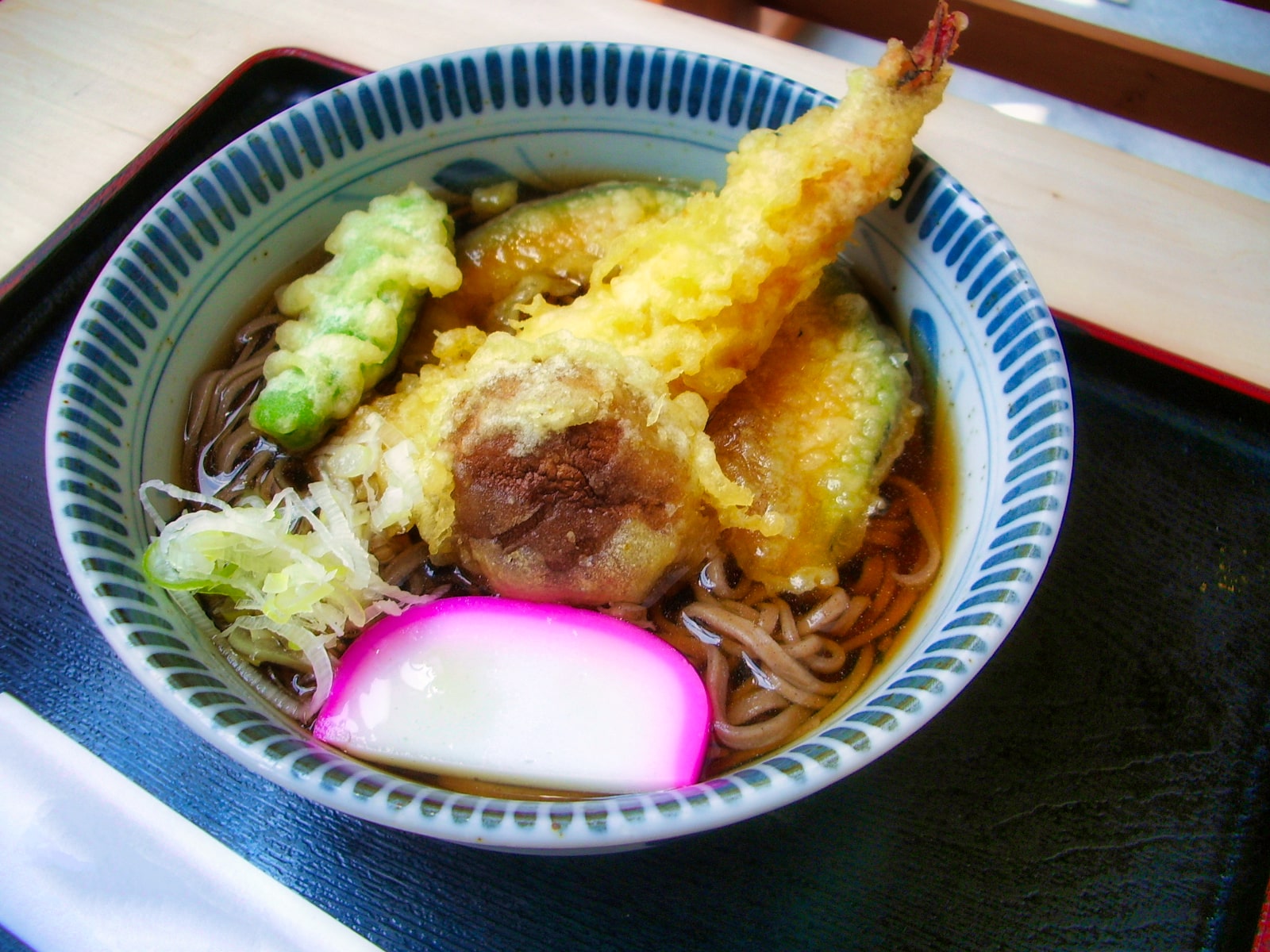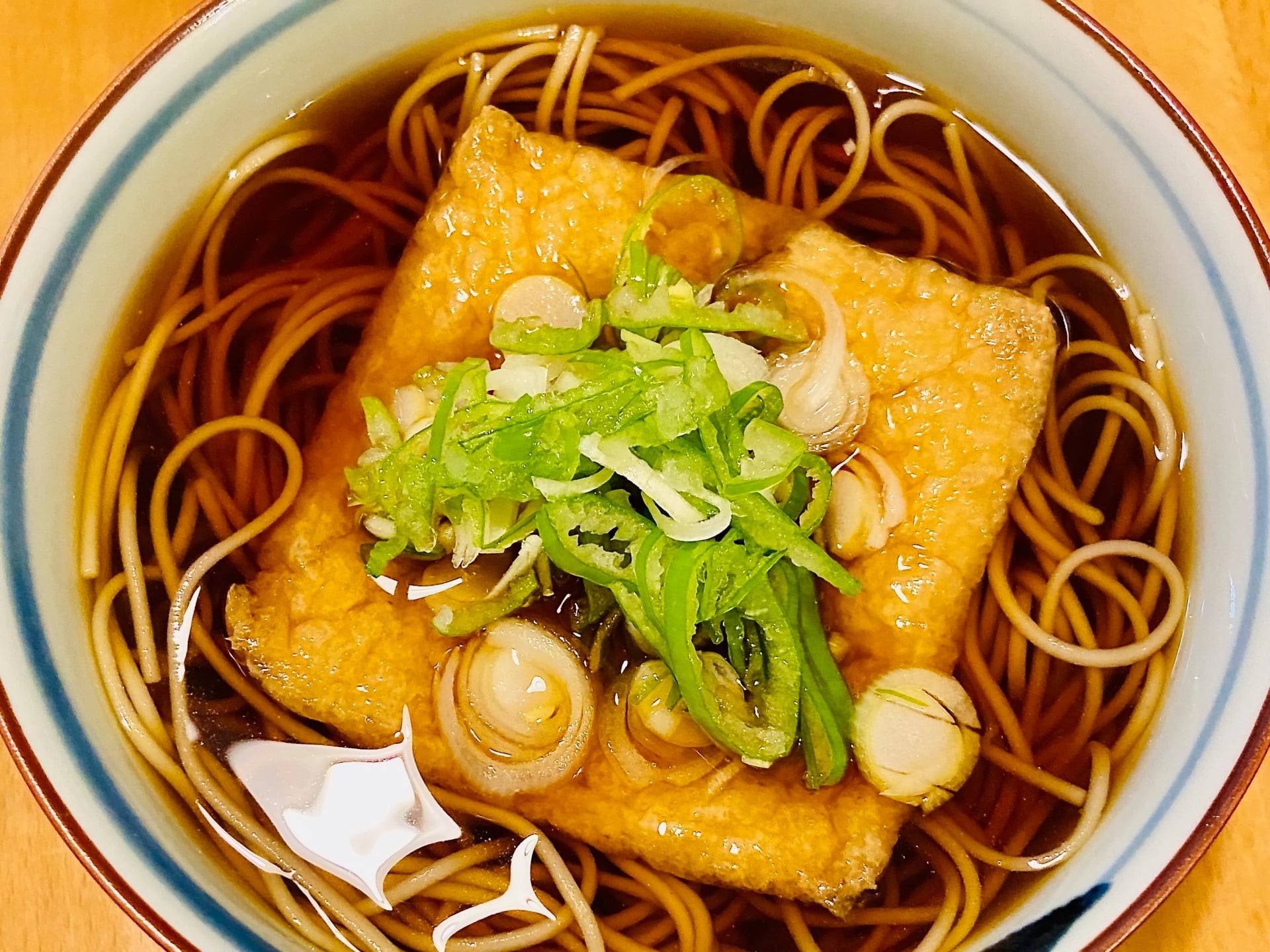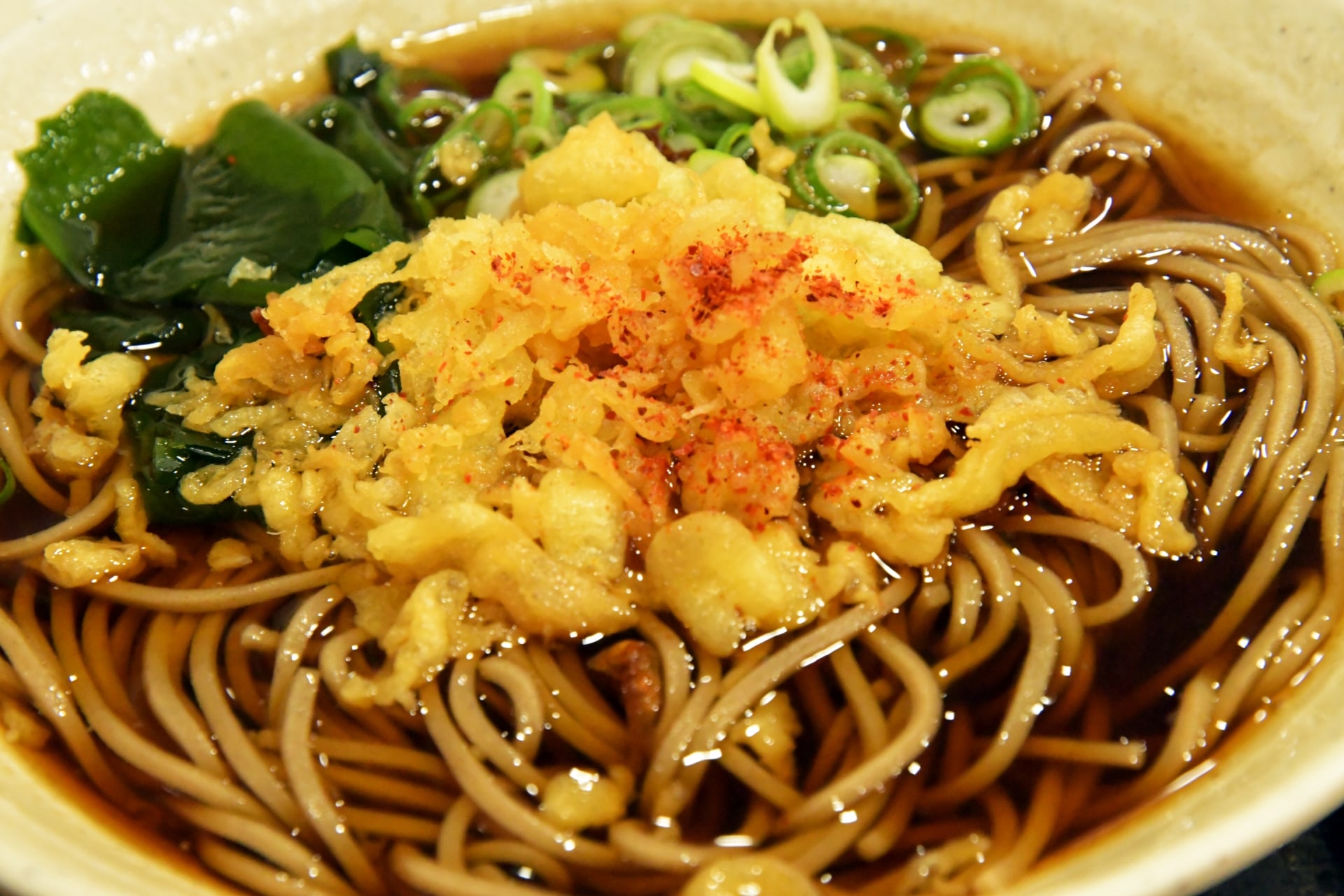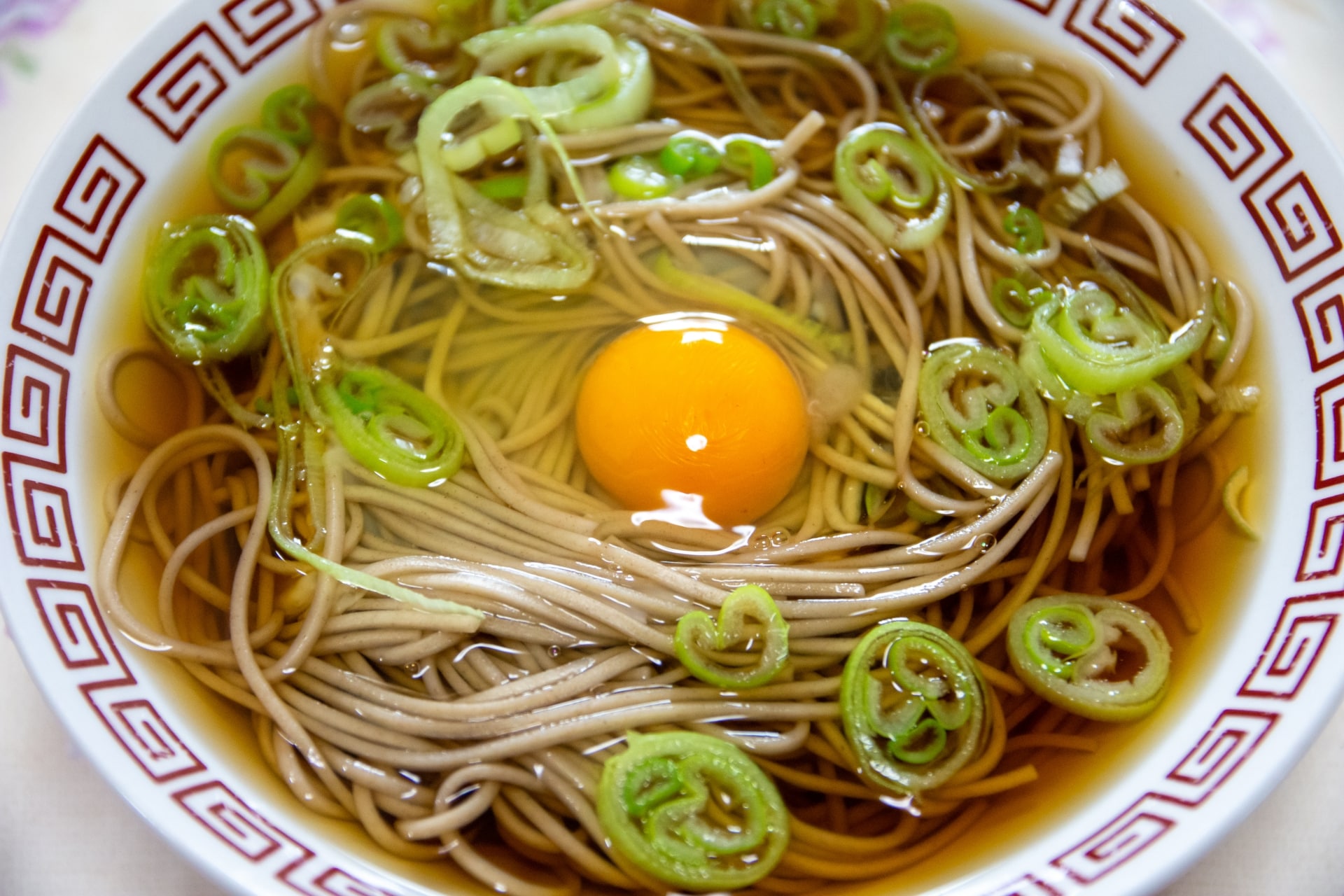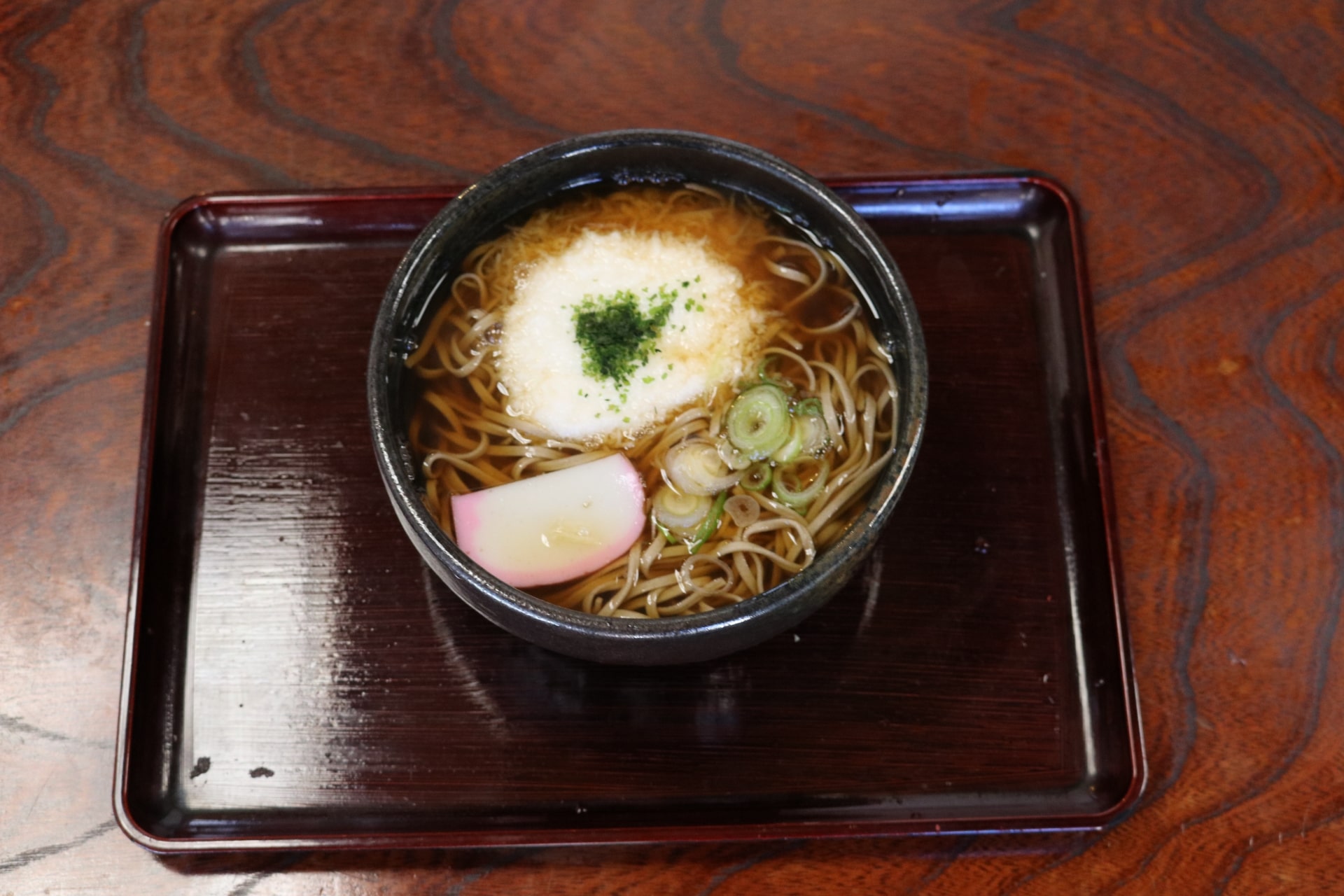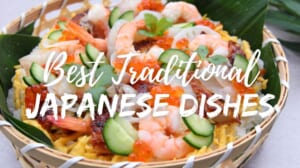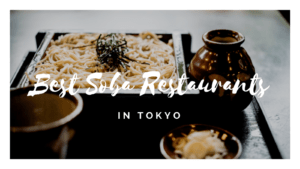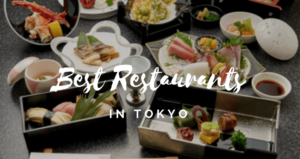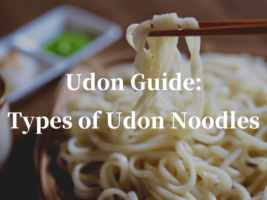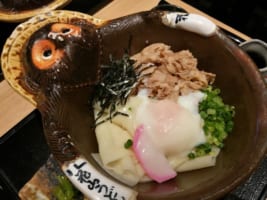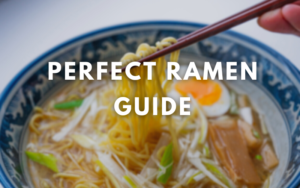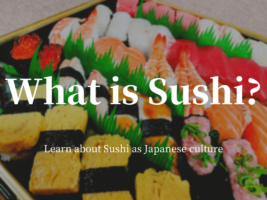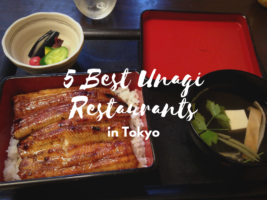Soba Guide: Types of Soba Noodles
All you need to know before eating Soba
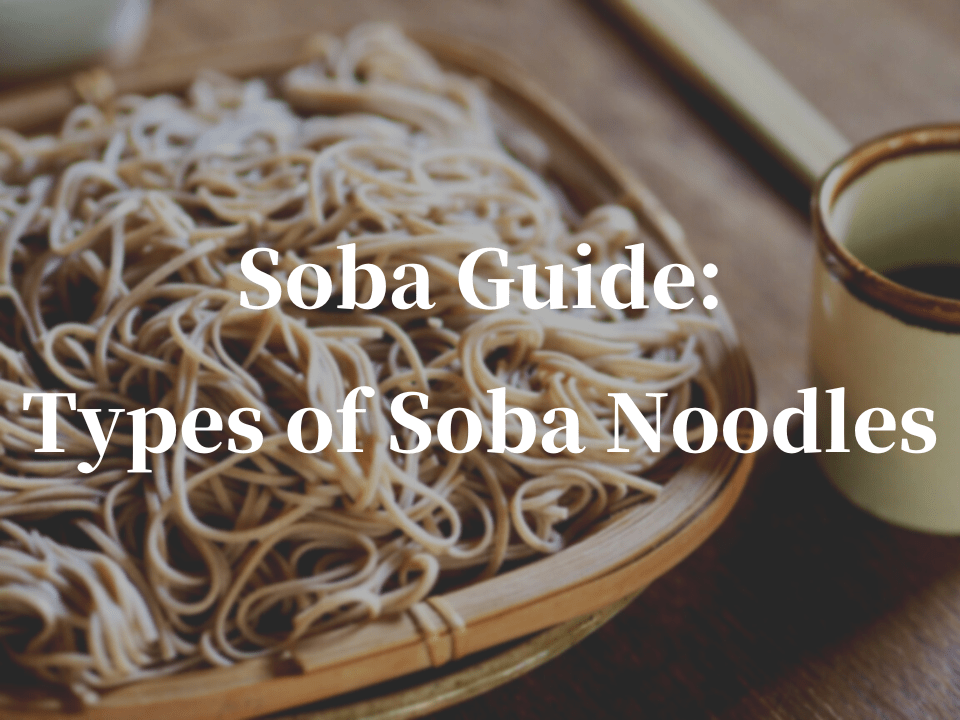
Have you ever tried eating Soba noodles? Soba is one of the more popular types of Japanese noodles along with Ramen and Udon; however, Soba has a long history that is said to predate that of these other two Japanese noodles.
Although many foreign visitors tend to focus on ramen, I would strongly recommend that you also try soba noodles if you’re coming to visit Japan.
In this article, I will explain some of the more important facts about soba, as well as the different types and ways of eating these traditional Japanese noodles.
What is Soba?
Soba(蕎麦) is a Japanese noodle that consists of buckwheat flour (over 30%), regular four (under 70%), and water. Its history is not completely clear, but buckwheat is said to have been grown and harvested in Japan as early as the Jomon era (10,000 BC). However, the oldest scripture indicating something similar to soba indicates that soba was already a thing by the Heian era (8th to 12th century).
One noticeable thing about soba is its nutritious value due to the addition of buckwheat. Soba noodles contain “Rutin”, a type of vitamin with antioxidant effects, making it good for preventing lifestyle-related diseases. This is also recommended for people with high blood pressure. Soba noodles are also said to be rich in vitamin B1 and B2, which are said to be good for maintaining beautiful skin.
A meal worth of soba noodles is around 296kcal, making it much lower compared to other types of noodles such as Ramen and Pasta.
Culturally speaking, Soba is eaten on special occasions such as when you move into a new house or on new years eve. Hikkoshi Shoba (引っ越し蕎麦) is a Japanese custom that is said to have started in the Edo period (17th to 19th century). The word “soba” can also mean “nearby” and soba noodles are long. So, when people would move into a new house, they would give soba noodles as a present to neighbors signifying “let’s build a good and long relationship as neighbors”.
There is also Toshikoshi Soba (年越し蕎麦) which is another Japanese tradition that involves soba noodles. This tradition started in the Kamakura period (13th to 14th century). People eat soba noodles on new years eve to wish for longevity (because soba noodles are long) and to cut off the bad energy that is present within you (because soba noodles can be cut off easily).
How to eat Soba
There are many types of soba noodles as well as ways of eating them. Because of its long history, you can imagine that there will be different ways of preparing the noodles and different ways of eating them. Roughly speaking, there are two ways of eating soba noodles which are either in a warm soup or with a cold dipping souse (Tsuyu).
There are also many different toppings that you can add to make your soba dish even more exciting. Seaweed, green onion, and wasabi are just a few to mention.
Types of Noodles
First, let me explain some of the different types of soba noodles. These are all soba noodles, but each of these has evolved respectively throughout history in their respective areas.
Sarashina Soba (更科そば)
Aso known as Gozen Soba (御膳蕎麦), this is soba made with a specific type of buckwheat flour that only uses the middle area of the wheat seed. Because this part of the wheat is white, Sarashina soba is also characterized by being whiter compared to regular soba.
Sunaba Soba (砂場そば)
This is a type of soba that originated in Osaka. It is characterized by being sweeter and using a thick tsuyu sauce.
Yabu Soba (藪そば)
This type of soba was said to have originated in Tokyo during the mid-Edo period. Contrary to Sarashina soba, Yabu soba is characterized by its dark color. It also tends to be served with relatively thick and salty tsuyu sauce.
Juuwari Soba (十割そば)
The word Juuwari literally means “100%”. This means that this type of soba consists of 100% buckwheat. It is characterized by its dry texture. It is really soft, so it is easy to cut off with your teeth.
Nihachi Soba (二八そば)
This type of soba consists of 80% buckwheat flour and 20% regular flour. Most soba sold around is this type. By adding regular flour to the mix, makes it a little more resistant and doesn’t cut off too easily.
Cold Types of Soba
From here, let me introduce some of the most popular ways of eating soba. First, let me share with you the cold types of soba.
Zaru Soba (ざるそば)
This is one of the most common ways of eating soba. It consists of a plate with only the noodles, and it comes with a cold dipping souse called Tsuyu. You take the noodles from the plate, dip a little in the sauce, and eat it.
Mori Soba (もりそば)
This is similar to zaru soba, but historically speaking, zaru soba was made using the best soba noodles and used the first dashi (soup stock). On the other hand, mori soba used second quality noodles and second dashi.
Wanko Soba (わんこそば)
This is a way of eating soba traditional from Iwate prefecture. It consists of serving “one-bite size” portions of the noodles in small dishes. And as you eat them, they will keep serving you the next portion until you can’t keep going.
Hot Types of Soba
Next, let me share with you some of the more popular ways of eating hot soba noodles.
Kake Soba (かけそば)
When eating hot soba noodles, this is the most common way of serving it. It simply consists of the soba noodles in a hot dashi soup and some toppings.
Tempura Soba (天ぷらそば)
From here, it is pretty much the same as Kake Soba, but with different toppings. In the case of Tempura soba, as you may already have imagined, it has tempura as topping.
Kitsune Soba (きつねそば)
In the case of Kitsune soba, the topping consists of Abura-age which is sweet, deep-fried, flattened tofu.
Tanuki Soba (たぬきそば)
In the case of Tanuki soba, the topping consists of Tenkasu which are crunchy bits of deep fried flour-batter.
Tsukimi Soba(月見そば)
Tsukimi soba is the same as Kake soba, but it has a raw egg as a topping. Tsukimi means “moon viewing”, so the egg yolk represents the moon in this case.
Tororo Soba (とろろそば)
Tororo soba is Kake soba with tororo on top. Tororo is a sticky food made from grating a yam.
▽Here is the complete guide to learn Best Traditional Japanese Dishes!▽
I hope you enjoyed this article. Although not as popular as ramen noodles, Soba noodles are also a very important food in Japanese culture. If you liked this article and want to know more about traditional Japanese foods, be sure to check out our other articles!
▽Related Articles▽
▼Editor’s Picks▼
Written by
Born and raised in Costa Rica, I started living in Tokyo from college. I love traveling within Japan & around the world. Since I wasn’t born in Japan, I know the cultural impact that you can get when visiting Japan for the first time and what you might be worried about before your trip. And I’ve lived long enough to somewhat understand the nuances of the Japanese culture that make this country such an attractive place to visit. Hopefully I can provide to you both the information you’re looking for and the information you didn’t know you needed to know.







